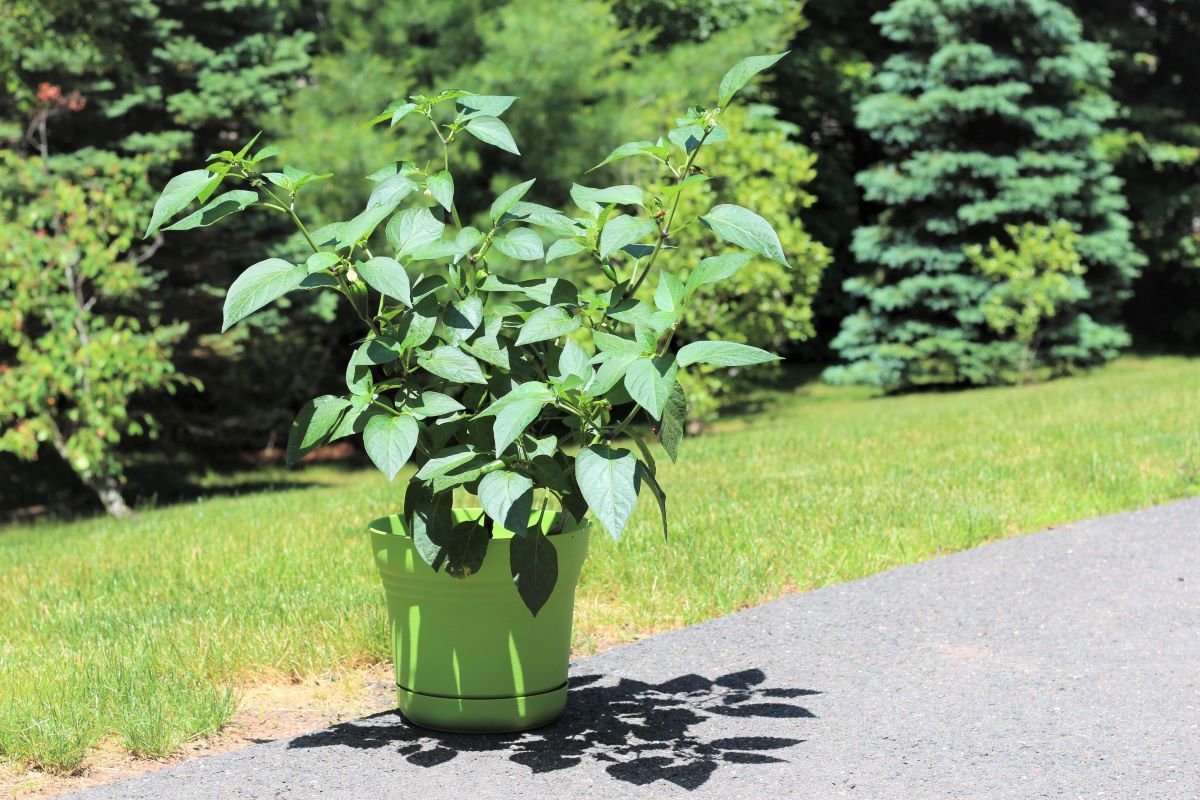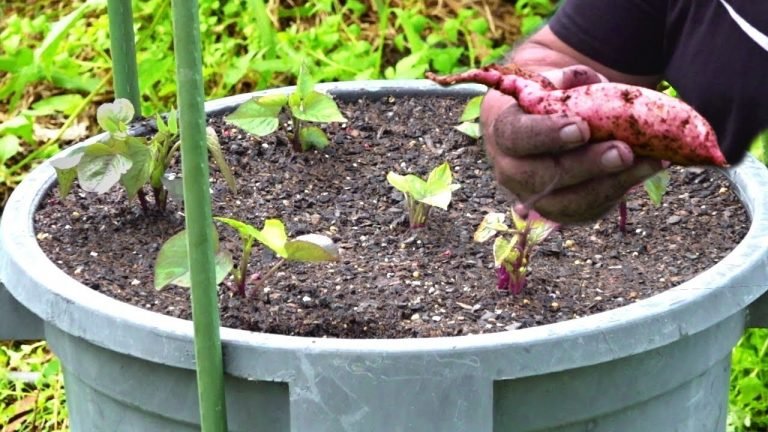how to grow jalapenos in a pot – [Beginners Guide]
Hey there! Are you a fan of spicy food and looking for a fun gardening project? Growing jalapenos in pots at home is a great idea! Not only are they easy to grow, but they also add a delicious kick to all your favorite dishes. Plus, growing your own jalapenos means you’ll always have a fresh supply on hand.
I personally love growing jalapenos in pots because it’s a convenient way to have a small vegetable garden even if you have limited outdoor space. With a little bit of care and attention, you can have fresh jalapenos right on your windowsill or balcony. Plus, by growing them in pots, you can control the soil and water conditions, ensuring that your plants are getting exactly what they need to thrive.
Another great thing about growing jalapenos in pots is that they’re very productive. One jalapeno plant can yield dozens of peppers! And with proper care, they can keep producing for several months. So whether you’re cooking for one or feeding a crowd, you’ll never run out of jalapenos.
So if you’re ready to give it a try, let’s get started! With a little bit of patience and some basic gardening know-how, you’ll be able to grow delicious, spicy jalapenos in no time. Happy gardening!
Pot or container selection
When it comes to growing jalapenos in pots at home, the type of pot you use is important for the success of your plants. Jalapeno plants have relatively deep root systems, so a pot with a depth of at least 12 inches and a diameter of at least 8 inches is ideal.
The pot construction is also important for optimal growth. A heavy-duty, durable pot made of materials such as terra cotta, ceramic, or plastic is best. These materials help to insulate the soil, keeping it at a consistent temperature, which is essential for healthy jalapeno plants. In addition, the pot should have drainage holes at the bottom to allow excess water to escape, preventing root rot.
A good rule of thumb when choosing a pot is to select one that is 2-3 times larger than the plant’s root ball, this will give the roots enough room to grow and provide enough soil to hold moisture and nutrients. Also, it is recommended to use a high-quality potting soil that is well-draining, as well as adding a layer of gravel at the bottom of the pot to improve drainage.
In summary, the ideal pot for growing jalapenos at home should be at least 12 inches deep and 8 inches in diameter, made of a heavy-duty, durable material, and have drainage holes. By using a pot that meets these requirements, you’ll be providing your jalapeno plants with the ideal growing conditions for a bountiful harvest.
Make suitable soil mix
Jalapenos, like most pepper plants, prefer well-draining soil with a slightly acidic pH between 6.0 and 6.8. The ideal soil mixture for growing jalapenos at home includes a blend of peat moss, compost, and vermiculite or perlite.
Peat moss helps to retain moisture and improve the overall structure of the soil. Compost adds essential nutrients and organic matter to the soil. Vermiculite or perlite improves drainage and aeration, which is important for the health of the pepper plant’s root system.
It is important to note that the correct soil composition is essential for optimal growth of jalapenos. Peppers require a consistent supply of moisture and nutrients to produce a bountiful harvest. Soil that is too heavy or poorly drained can lead to root rot, while soil that is too dry can result in stunted growth or blossom drop.
How to plant the jalapenos?
Growing jalapenos in a pot at home is a great way to enjoy fresh peppers all season long. Here is a step-by-step guide to planting jalapenos in a pot:
- Select a pot with drainage holes at the bottom. Jalapenos require well-draining soil, so it is important to have a pot that can allow excess water to drain out. A pot that is at least 12 inches deep and 12 inches wide is ideal for one pepper plant.
- Prepare the soil by mixing peat moss, compost, and vermiculite or perlite in a container. The soil should have a slightly acidic pH between 6.0 and 6.8.
- Fill the pot with the prepared soil mixture, leaving about 2 inches of space at the top of the pot.
- Plant the pepper seedling in the center of the pot and gently pat down the soil around it.
- Water the seedling thoroughly until water drains from the bottom of the pot. Pepper seedlings require consistent moisture, so be sure to keep the soil consistently moist but not waterlogged.
- Place the pot in a sunny location that receives at least six hours of direct sunlight per day. Jalapenos require warm temperatures and plenty of sunlight for optimal growth.
- Fertilize the seedling every 2 weeks with a balanced, water-soluble fertilizer.
With proper care, your jalapeno plant should start producing peppers in about 60-90 days. Be sure to keep an eye on the plant’s growth and adjust watering and fertilizing as necessary. Happy gardening!
How to care for jalapenos?
Watering Requirement
Jalapenos require consistent moisture to thrive. The soil should be kept consistently moist but not waterlogged. It’s important to check the soil moisture frequently and water the plant when the top inch of soil is dry. It’s also important to ensure that the pot has good drainage to prevent water from pooling at the bottom, which can lead to root rot.
Fertilizer Requirement
Jalapenos require a consistent supply of nutrients to produce a bountiful harvest. Fertilize the plant every 2 weeks with a balanced, water-soluble fertilizer. It’s important to follow the instructions on the fertilizer package for the appropriate amount to use.
Sunlight Needs
Jalapenos require full sun to grow optimally. They need at least six hours of direct sunlight per day. If grown indoors, place the pot near a sunny window or use artificial grow lights.
Pruning & Training
Jalapeno plants benefit from occasional pruning and training. This helps to encourage bushier growth and increase the number of peppers produced. Prune the plant when it reaches 12 inches tall by pinching off the tips of the stem. The plant will then branch out and produce more peppers.
Other Care
- Keep an eye out for pests and diseases and take appropriate action if necessary.
- Provide proper support for the plant as it grows. Jalapenos can grow tall and may need staking or a cage to support the weight of the peppers.
- To promote bushier growth and increase the number of peppers, you can pinch off the tips of the stem when the plant reaches 12 inches tall.
By following these care instructions, your jalapeno plant should be healthy and produce a bountiful harvest. Remember to be patient, as it can take 60-90 days for the plant to start producing peppers. Happy gardening!
Common problems
Pests and Insects
Jalapenos, like most pepper plants, can be susceptible to pests and insects such as aphids, spider mites, and whiteflies. These pests can suck the sap from the leaves and cause leaf yellowing and wilting. To control pests, you can use insecticidal soap or neem oil, or introduce beneficial insects such as ladybugs or lacewings.
Diseases
Jalapenos can also be affected by several diseases, such as bacterial leaf spot, powdery mildew, and mosaic virus. These diseases can cause leaf yellowing, wilting, and fruit rot. To prevent diseases, it’s important to practice good hygiene, such as avoiding overhead watering and removing infected leaves.
Poor Production
Poor production in jalapenos can be caused by several factors such as lack of pollination, improper fertilization or over-fertilization, or lack of sunlight or too much shade. You can increase pollination by shaking the plant gently, or by using a small brush to transfer pollen from flower to flower. Be sure to follow proper fertilization guidelines and ensure that the plant is getting enough sunlight.
Other Issues
- Overwatering or poor drainage can lead to root rot and can cause the plant to wilt and die.
- Jalapeno plants can be tall and may require staking or a cage to support the weight of the peppers.
- Jalapenos may not produce fruit if temperatures are too cool or too hot.
By being aware of these common problems and taking appropriate action, you can help ensure that your jalapeno plants stay healthy and productive. Keep in mind that gardening is a process, and it’s important to be patient and persistent in your care. Happy gardening!
Harvesting & storing homegrown jalapenos
When to Harvest
Jalapenos are ready to harvest when they reach full size and turn red. They can also be harvested when they are still green, as they will continue to ripen off the vine. Jalapenos are typically ready to harvest 60-90 days after planting, depending on the variety and growing conditions.
How to Harvest
- Use scissors or pruning shears to cut the pepper from the stem, leaving a small portion of the stem attached to the pepper.
- Handle the pepper gently to avoid bruising.
- Once the pepper is picked, it will not continue to ripen on the vine.
How to Store
- Jalapenos can be stored in the refrigerator for up to two weeks.
- They can also be frozen for up to six months by first blanching them, then storing them in airtight freezer bags.
- Jalapenos can also be dehydrated or pickled for longer storage.
Harvesting and storing homegrown jalapenos properly will help ensure that they retain their flavor and quality. Keep in mind that the pepper’s flavor will be at its peak when it is fully ripe, and that the heat level of the pepper can vary depending on growing conditions. Happy harvesting!
Growing jalapenos in container – Conclusion
Growing jalapenos in a pot at home is a great way to enjoy fresh peppers all season long. With proper care, your jalapeno plant should be healthy and productive, and with the right soil mixture, proper watering, fertilization, and sunlight, you can expect to harvest jalapenos between 60-90 days after planting.
It is important to keep an eye out for pests and diseases, as well as problems such as poor production, and take appropriate action if necessary. Additionally, it is important to harvest and store jalapenos properly to ensure they retain their flavor and quality.
Here are some key takeaways to keep in mind:
- Jalapenos prefer well-draining soil with a slightly acidic pH between 6.0 and 6.8.
- Jalapenos require consistent moisture, full sun, and a consistent supply of nutrients to produce a bountiful harvest.
- Jalapenos can be susceptible to pests, insects, and diseases, so it’s important to be vigilant and take appropriate action if necessary.
- Jalapenos should be harvested when they reach full size and turn red.
- Jalapenos can be stored in the refrigerator for up to two weeks, frozen for up to six months, dehydrated or pickled for longer storage.
By following these guidelines, you’ll be well on your way to growing delicious, homegrown jalapenos in a pot. Don’t be afraid to experiment with different growing conditions, and have fun with it! Happy gardening!







